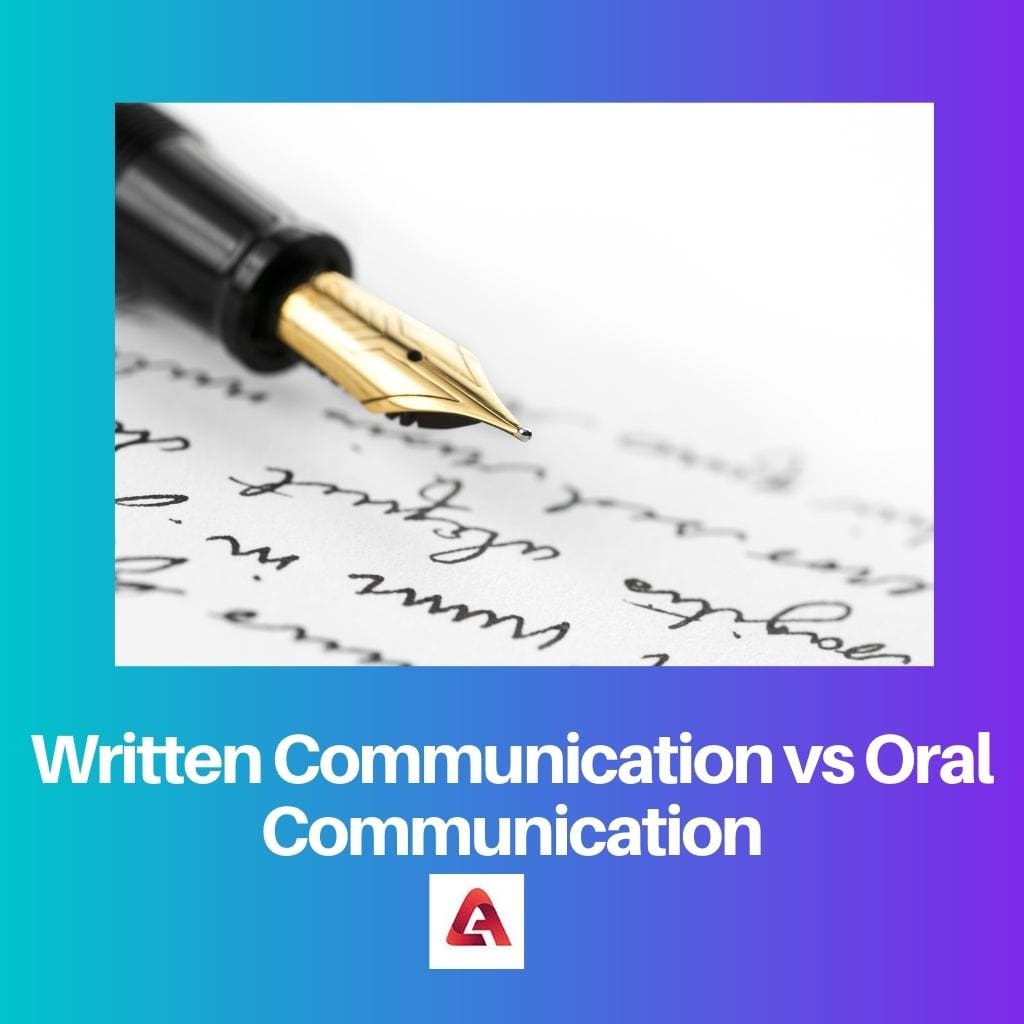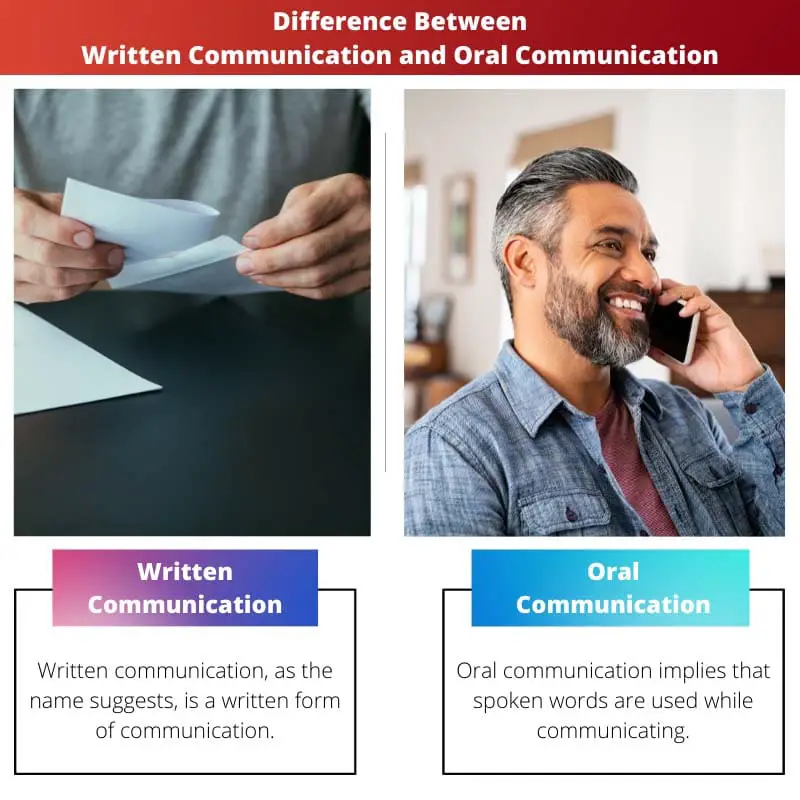Communication is the most important life skill. Efficient communication skills can help one reach heights in almost every aspect of life.
From personal relationships to formal meetings, communication acts as a significant part. Humans have depended on communicating with each other for any purpose or without any purpose.
Written and oral communications are two types of communication forms.
Key Takeaways
- Written communication involves using written symbols to convey information and ideas, which can be saved and shared easily. In contrast, oral communication involves spoken words and gestures to convey information and ideas, which are ephemeral and require immediate attention.
- Written communication allows for careful crafting and editing of messages, which can ensure clarity and accuracy. In contrast, oral communication allows for immediate feedback and clarification, enhancing understanding and connection between people.
- Written communication is more formal and requires higher literacy levels, while oral communication is more informal and requires higher levels of speaking and listening skills to be effective.
Written Communication vs Oral Communication
Oral communication is mode of passing on a message. Oral communication involves conveying a message to an individual through spoken words. The formal method of transmitting information to someone in a written format is called written communication. The message can be exchanged in text from.

Written communication is used for legal purposes. The written message must have correct grammar, spelling, structure, and form. Other than that, the text messages we share with our friends are more on the informal side of the continuum. The rigidity is a bit more flexible in informal settings.
In our everyday conversations, oral communication is used. Oral speeches are flexible and are allowed to have fillers, incorrect grammar, and a lack of structure. In formal settings, oral speeches can be very well structured and expressed, but still, there is a scope for fillers and instant modifications.
Comparison Table
| Parameters of Comparison | Written Communication | Oral Communication |
|---|---|---|
| Mode of communication | Written words | Spoken words |
| Structure | Well-structures, minimal mistakes | Loosely structured, allowed to make a few errors. |
| Permanence | It can be preserved as proof. | There is no record. |
| Access to the information | Anyone can have the write-up. | The speaker can choose the audience. |
| Feedback from the recipient | Delayed | Instant |
What is Written Communication?
As the name suggests, written communication is a written form of communication. Written words are used while communicating with people.
Messages, emails, letters, and contracts are examples of written communication.
While communicating formally in written form, the language is kept concise and legitimate.
The written message or document can be used as proof. Also, it cannot be tampered with if the document is encrypted properly.
Generally, written communication aims to communicate information to the audience. In formal scenarios, written communication helps efficiently deliver one individual’s ideas to the other.
A written text is more permanent, so it can be traced back as per requirements. For instance, a reader can look at this article again anytime, per their requirement.
Hence, the terms of a contract are communicated in written form so that it can be reread to interpret it.
However, there is a lack of secrecy in written communication. The person on the receiving end may circulate the written message to anyone.
Moreover, there is limited scope for instant feedback. The intended recipient may reply or give their feedback in due course of time.
Also, the written text must be understandable and well-structured to deliver the idea clearly to the recipient.

What is Oral Communication?
Oral communication implies that spoken words are used while communicating. It is widely used when communicating with friends, relatives, employees, and partners.
It also includes speeches, presentations, lectures, and discussions.
Oral communications are more flexible. They are modified according to the listener’s level of comprehension.
For instance, a PhD holder delivers speeches in an undergraduate college, according to the audience’s level.
Oral communication is especially efficient in resolving issues. There is scope for the recipient to give their feedback, advice, or concerns immediately. Decisions can be made instantly due to immediate replies from the other end.
Further, there is minimal scope for misunderstandings in oral communication. The speaker can choose their audience; hence, the information is safe. However, gossips are also a form of oral communication.
Gossip can be easily spread because there is no record of the communication.
Oral communications are less organized and may lack essential information. Besides that, the speaker can stray from the intended topic, which may waste time and energy.
The informal nature of oral communication can help in building interpersonal relationships. But it is not recommended to keep records of business meetings and contracts.
Oral communications have comparatively less value in courts, so keeping a written record of formal matters is recommended.

Main Differences Between Written Communication and Oral Communication
- Written communication is based on written words, whereas oral communication functions on spoken words.
- Written communication is densely packed with information, but oral communication allows gaps and fillers to make the conversation lighter.
- The written communication can be saved for the future as proof or memory. On the other hand, there is no record of oral communication unless it is specifically recorded.
- The recipient can share written communication with anyone without the sender’s knowledge. But, while communicating orally, the speaker can choose his/her audience.
- Written communication has little to no space for changing the final message. But, in oral communication, the speaker can modify his/her message even at the last moment.

- https://books.google.com/books?hl=en&lr=&id=hVBcAgAAQBAJ&oi=fnd&pg=PP1&dq=what+is+written+communication&ots=FaQoJX33ht&sig=NzXPggrYhoGJ57l5RwtAYZJEAwU
- https://onlinelibrary.wiley.com/doi/abs/10.1111/j.1540-4781.2006.00390.x
- https://eric.ed.gov/?id=ED296333
- https://pdfs.semanticscholar.org/141f/9dfc25d4a9c3ee41119155253dff6fbc1e7f.pdf



